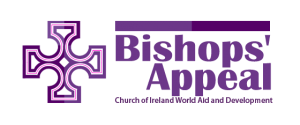Improved Livelihoods for Rural Communities in Zambia
€10,643
The Project:
Improved Livelihoods for Rural Communities in Eastern Province – Zambia
Grant request €10,643
Project Aim: Improved Livelihoods for Rural Communities is a three year project, the overall goal is to significantly reduce poverty levels amongst 4,500 poor people in three districts of Eastern Province in Zambia. Our target is for 75% of project beneficiaries to have an annual income of at least 1US$/ day at the end of the project. The expected outcome is a significantly increased income for 4,500 households through expanded agricultural rural enterprises options and better financial services and products to meet their basic socio-economic needs.
Project activities:
- Farm-based income generation enterprises (e.g. sunflower oil, beekeeping and groundnut processing)
- Supporting and facilitating farmers’ access to profitable agricultural produce markets through the formation of marketing groups such as associations and cooperatives.
- Promoting agri-business, value addition and agro-processing of sunflower and other crops.
- Promoting best practice agriculture technologies to produce specific agriculture products, which have an outright share on the market.
- Establishing village savings and loans groups in those areas and with those groups considered too vulnerable and high risk to access microfinance services.
The project is particularly targeting women who are traditionally economically dis-empowered within their households. Targets 55-60% of project participants are women.
To ensure the project benefits are sustainable, local government structures and local organisations are being supported to develop and grow. Self Help Africa is working in partnership with Muthila Kubili Sustainable Agriculture Project (MK-SAP) and Mfubeni Development Association (MDA), two local NGOs present in the targeted area, farmer associations, subject- matter specialists at the District Council, agricultural research facilities and local finance institutions
Beneficiaries
The project is directly targeting 4,500 families in 3 districts – Chipata, Lundazi and Katete. With a family multiplier of 6 (for Zambia) around 30,000 people are being reached by the project. These direct beneficiaries are selected from categories that are considered to fall below the Millennium Development Goal target of earning US$ 1/day.
Direct beneficiaries are selected using the following criteria:
Often eat one / two meals per day especially in the run up to the new harvest
Cultivate insufficient land (usually less than 5 hectares)
Income below US$ 1 / day (reflected by expenditure levels)
Few realisable assets to deal with shocks (small livestock)
Households that have lost or are caring for key economically active members and are considered vulnerable to becoming poorer (HIV/AIDS epidemic).
Have the interest and capacity to engage in income generating activities
Funding Request:
We are requesting funding of €10,643 from The Church of Ireland Bishops Appeal to cover the purchase of processing equipment, as detailed below
Budget line
| ITEM | Total no of units | Unit Cost (Kwacha) | Total Cost (Kwacha) | Total Cost (€) |
| Sunflower oil expellers | 5 | 9,000 | 45,000 | 5,650 |
| Honey presses | 4 | 2,500 | 10,000 | 1,226 |
| Groundnut/peanut presses | 3 | 10,000 | 30,000 | 3,767 |
| TOTAL | 12 | 85,000 | 10,643 |
These processing machines are hand-powered tools, which will be used by 12 Community Producer Groups to add value to their produce. For example, extracting oil from sunflower seeds has enabled one Community Producer Group to earn three times the income they received from selling the seed ‘raw’. Sunflower oil is a good source of nutrition and the by-product left after extracting the oil is used to make sunflower cake, which is used as animal feed. There is strong local demand for honey and peanut butter, with farmers receiving better prices for processed blocks of honeycomb rather than small, individual pieces. Each Community Producer Group has an average of 30 members, therefore the machines will be used by 360 farmers, enabling them to increase incomes and improve nutrition for approximately 2,160 people in their households.

